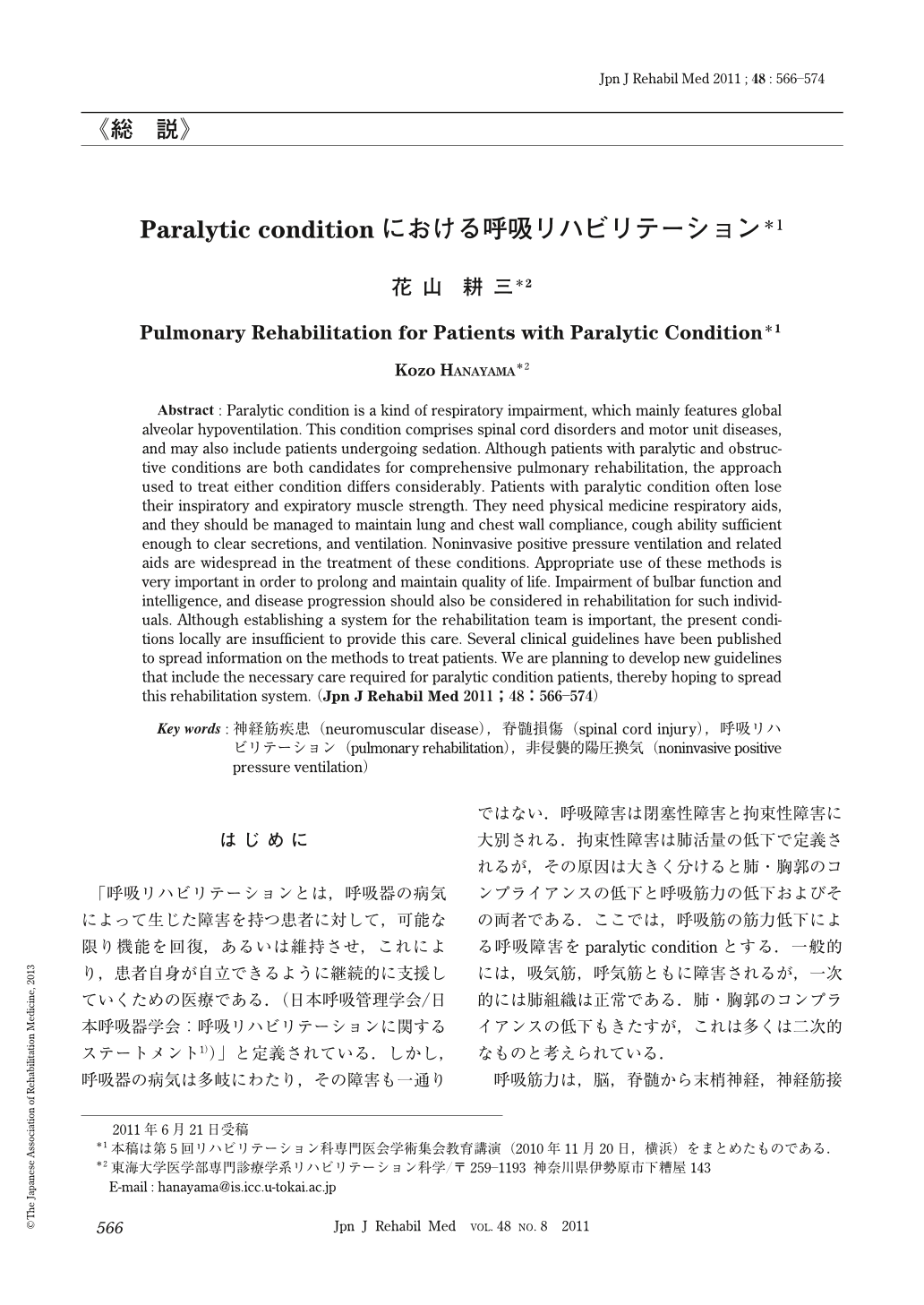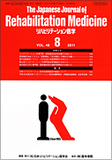Japanese
English
- 販売していません
- Abstract 文献概要
- 1ページ目 Look Inside
- 参考文献 Reference
はじめに 「呼吸リハビリテーションとは,呼吸器の病気によって生じた障害を持つ患者に対して,可能な限り機能を回復,あるいは維持させ,これにより,患者自身が自立できるように継続的に支援していくための医療である.(日本呼吸管理学会/日本呼吸器学会:呼吸リハビリテーションに関するステートメント1))」と定義されている.しかし,呼吸器の病気は多岐にわたり,その障害も一通りではない.呼吸障害は閉塞性障害と拘束性障害に大別される.拘束性障害は肺活量の低下で定義されるが,その原因は大きく分けると肺・胸郭のコンプライアンスの低下と呼吸筋力の低下およびその両者である.ここでは,呼吸筋の筋力低下による呼吸障害をparalytic conditionとする.一般的には,吸気筋,呼気筋ともに障害されるが,一次的には肺組織は正常である.肺・胸郭のコンプライアンスの低下もきたすが,これは多くは二次的なものと考えられている.
呼吸筋力は,脳,脊髄から末梢神経,神経筋接合部,筋にわたる経路を通じてコントロールされている2).この経路のいずれが障害されても呼吸筋の筋力低下が起こりうる.Paralytic conditionを呈する疾患とは,この経路のいずれかが侵されるものであり,原因は神経・筋の変性,外傷,感染症など多岐にわたり,発症様式も急性,慢性進行性,反復性とざまざまである(図1).特に,脊髄前角細胞から末梢神経,神経筋接合部,筋にいたる部分は運動単位に属する部分であり,この障害を運動単位疾患(motor unit disease)と総称する3).また,呼吸筋力低下が主要な問題であるのはここに挙げた疾患によるもののみではなく,加齢,廃用,鎮静などもこの状態に含まれる可能性がある.
本稿では,paralytic conditionをきたす疾患の呼吸リハビリテーション(以下,リハ)につき概説する.
Abstract : Paralytic condition is a kind of respiratory impairment, which mainly features global alveolar hypoventilation. This condition comprises spinal cord disorders and motor unit diseases, and may also include patients undergoing sedation. Although patients with paralytic and obstructive conditions are both candidates for comprehensive pulmonary rehabilitation, the approach used to treat either condition differs considerably. Patients with paralytic condition often lose their inspiratory and expiratory muscle strength. They need physical medicine respiratory aids, and they should be managed to maintain lung and chest wall compliance, cough ability sufficient enough to clear secretions, and ventilation. Noninvasive positive pressure ventilation and related aids are widespread in the treatment of these conditions. Appropriate use of these methods is very important in order to prolong and maintain quality of life. Impairment of bulbar function and intelligence, and disease progression should also be considered in rehabilitation for such individuals. Although establishing a system for the rehabilitation team is important, the present conditions locally are insufficient to provide this care. Several clinical guidelines have been published to spread information on the methods to treat patients. We are planning to develop new guidelines that include the necessary care required for paralytic condition patients, thereby hoping to spread this rehabilitation system.

Copyright © 2011, The Japanese Association of Rehabilitation Medicine. All rights reserved.


